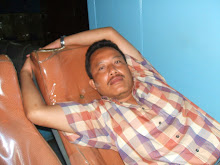
ABSTRACT
EFFECTS OF TRACTOR UTILIZATION ON OIL PALM( Elaeis guineensis Jacq.) YIELD AND SOIL PROPERTIES OIL PALM
By
One of the problems of oil palm plantation is that the yield is still low. Improvement of cultural technicques expectedly can increase oil palm yield. One of way increasing yield is by employing mechanization, i.e. using tractors. This experiment was conducted to study effect of duration of mechanization, i.e. use of tractors on oil palm yield and physical, chemical, and biological properties of soil.
This experiment was carried out at estate Sungai Tungkal and Sungai Pelepah using survey method. Each estate was subjected to mechanization applied: one-year, two-year, and three year period of mechanization. In each blocks applied of mechanization was done in three replicates. Soil sample taken at track area of tractors by random. While yields of data taken away from by each estate during one year. One-year, two-year, and three-year was represented by planting year 2001/2002, 1999/2000, and 1997/1998, respectively. Data were analyzed with BIPLOT using descriptrive-explorative statistics. Difference in variable values was subjected to multivariate analysis of variance (MANOVA).


Tidak ada komentar:
Posting Komentar